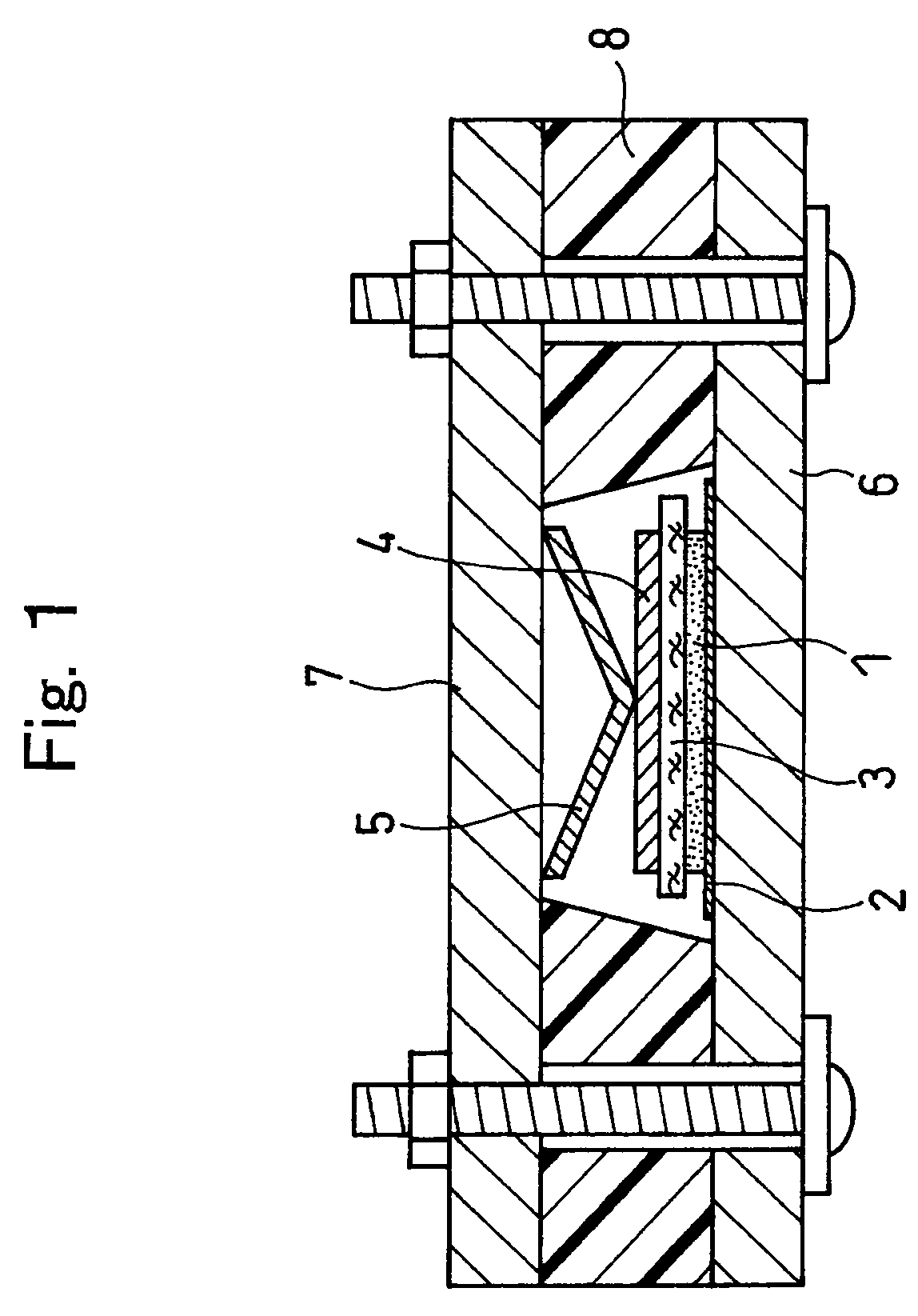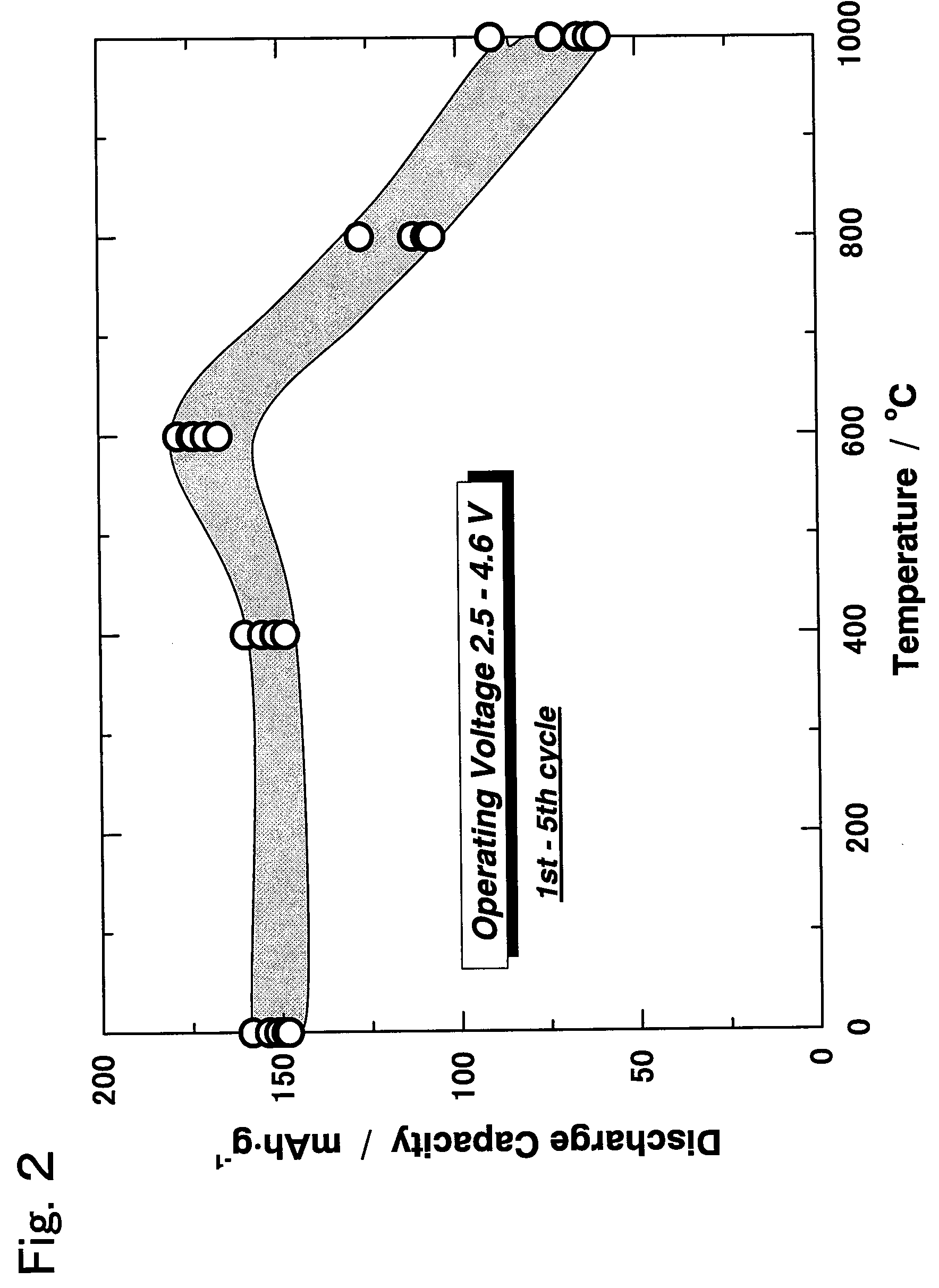Active material for non-aqueous electrolyte secondary battery and manufacturing method therefore
a technology of active materials and secondary batteries, which is applied in the direction of non-aqueous electrolyte cells, nickel compounds, cell components, etc., can solve the problems of reducing battery characteristics such as load characteristics and cycle life, reducing battery characteristics, and reducing material so as to reduce the electron conductivity and lithium diffusing ability of materials, improve the capacity of materials, and reduce the effect of battery characteristics
- Summary
- Abstract
- Description
- Claims
- Application Information
AI Technical Summary
Benefits of technology
Problems solved by technology
Method used
Image
Examples
example 1
[0206]An active material (LiNi0.5Mn0.5O2) that behaves differently from the lithium-containing transition metal oxide having the conventionally known layer structure was synthesized in the manner as described below. The active material was synthesized by the method as described above in
(2) “Preparation Method of Active Material I”.
(i) Starting Material Containing Nickel and Manganese
[0207]As the starting material containing nickel and manganese, spherical (Ni0.5Mn0.5) (OH)2 was prepared by coprecipitation method.
(ii) Precursor Oxide
[0208]The spherical (Ni0.5Mn0.5) (OH)2 was pre-baked at 600° C. for 4 hours in air to prepare the precursor oxide.
(iii) Lithium-Containing Transition Metal Oxide
[0209]The precursor oxide and lithium hydroxide serving as the lithium source were mixed, and the resultant mixture was main-baked at 1000° C. for 15 hours in air, whereby LiNi0.5Mn0.5O2 was obtained.
[0210]The atomic ratio mLi / mT between the number of moles of lithium mLi and the total number of m...
example 2
[0219]A preferred main-baking temperature for ensuring the crystallinity of the active material was examined.
[0220]Active materials were synthesized in the same manner as in Example 1 except that the main-baking time was changed. The main-baking time was changed to 0 hours, 1 hour, 7 hours, 12 hours, and 24 hours. The baking time is the period of time that has passed after 1000° C. was reached. For example, in the case of 0 hours, the mixture of the precursor oxide and the lithium source was permitted to cool immediately after the temperature was raised to 1000° C.
[0221]FIG. 24 shows the XRD patterns of the respective active materials thus obtained. The integrated intensity ratios I003 / I104 at the respective baking time are almost constant, showing almost no variation. On the other hand, with respect to the peaks attributed to the (108) plane and the (110) plane, when the main-baking time is 0 hours and 1 hour, the peaks are slightly obscure. When the main-baking time is 7 hours or ...
example 3
[0222]The atomic ratio MLi / MT between the number of moles of lithium MLi and the number of moles of transition metal Mt contained in the lithium-containing transition metal oxide was examined. The active material of the present invention, especially when it contains lithium in excess, exhibits a distinctive behavior different from the behavior of the conventional active material whose composition is the same as that of active material of the present invention.
[0223]Active materials were synthesized in the same manner as in Example 1 except that the atomic ratio MLi / MT was changed. The atomic ratio was changed in the range from 0.8 to 1.5. Specifically, prior to the main-baking, in the process of mixing the precursor oxide and lithium hydroxide, the atomic ratio mLi / mT between the number of moles of lithium mLi and the total number of moles of Ni and Mn being the transition metal mT contained in the mixture was adjusted to a predetermined molar ratio.
[0224]FIG. 25 shows the XRD patte...
PUM
| Property | Measurement | Unit |
|---|---|---|
| mean particle size | aaaaa | aaaaa |
| temperature | aaaaa | aaaaa |
| temperature | aaaaa | aaaaa |
Abstract
Description
Claims
Application Information
 Login to View More
Login to View More - R&D
- Intellectual Property
- Life Sciences
- Materials
- Tech Scout
- Unparalleled Data Quality
- Higher Quality Content
- 60% Fewer Hallucinations
Browse by: Latest US Patents, China's latest patents, Technical Efficacy Thesaurus, Application Domain, Technology Topic, Popular Technical Reports.
© 2025 PatSnap. All rights reserved.Legal|Privacy policy|Modern Slavery Act Transparency Statement|Sitemap|About US| Contact US: help@patsnap.com



